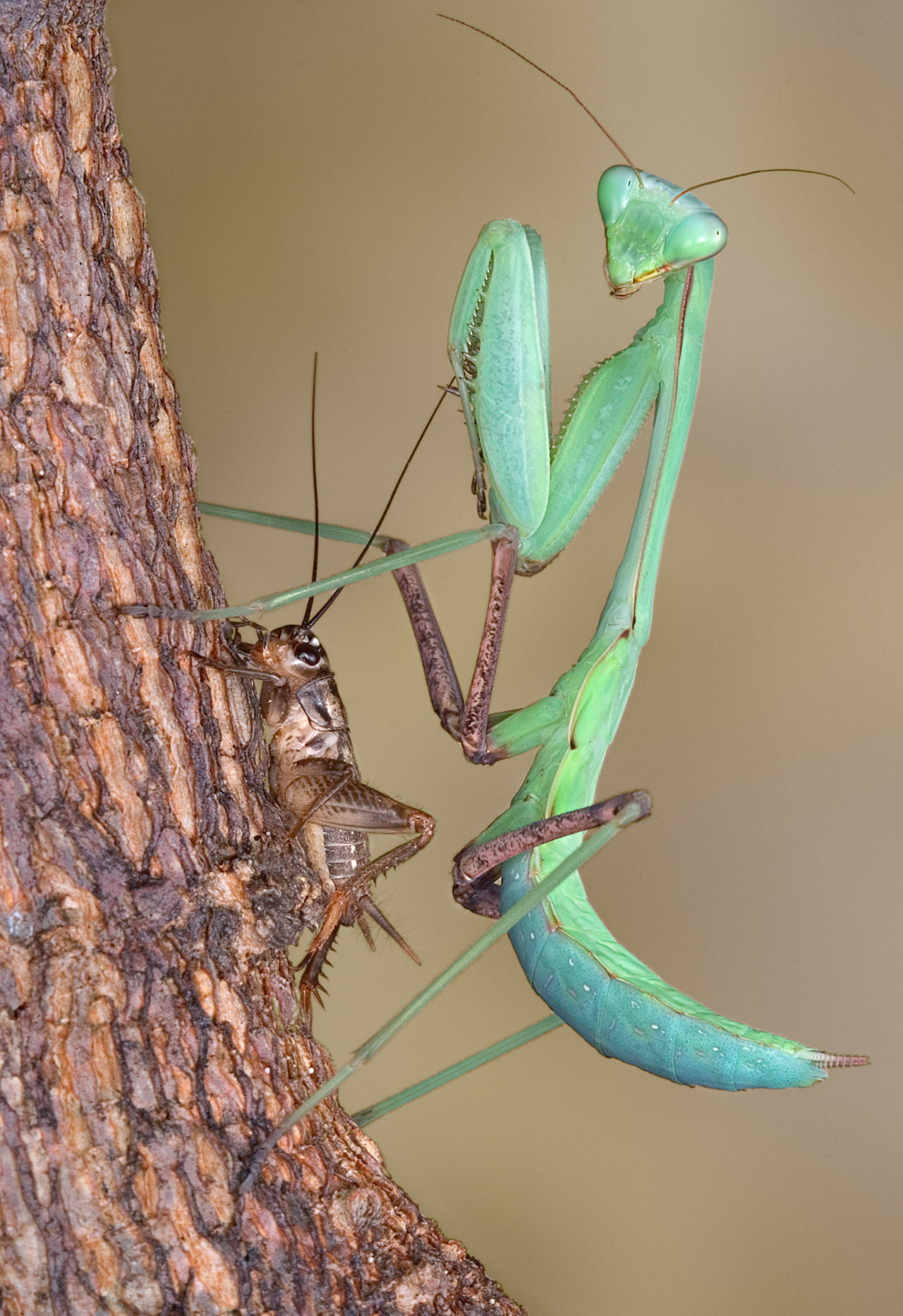

A single ear, located on the thorax, helps them detect bats.įemales are famous for eating their mates in the heat of the moment, as we saw on that memorable “Buffy the Vampire Slayer” episode, but this behavior is reported much less often in the wild than it is in caged pairs, where the male can’t escape after mating. PMs are visual hunters and therefore daytime feeders, but males may fly at night, tracking female pheromones. Fellow mantises are fair game- hatchlings are advised to move away from the egg case hastily. It targets insects, spiders and other invertebrates, but tropical mantises have been observed holding hummingbirds, small snakes, bats, and baby mice.

She kept looking at the plant, thinking, “Wait-pickerel weed doesn’t have any parts where that plant has parts.”Īccording to Elizabeth Lawlor in the wonderful Discover Nature around the House, when an insect is beyond a mantis’s considerable reach, the mantis engages in a slow, swaying dance, making eye contact with its proposed meal, edging forward as it sways, until it is suddenly close enough.

The BugLady found a mantis in New Jersey once that was blending into a pickerelweed. Mantises rely on camouflage and stealth to ambush their prey (there’s a pink Malaysian mantis that blends into tropical orchids, and there are some mantis species that chase their prey like tiger beetles do). Like owls, they can rotate their heads significantly (but not like a corkscrew) (neither can owls), the only insects that are able to do so. Their eyes are situated so as to afford them binocular vision like hawks and owls they can see forward with both eyes and can judge the distance to their prey. The serrations/spines on the second and third sections of their abnormally long front legs interlock when they grab their prey, making escape impossible. The BugLady cannot speak to their religious proclivities, but they are superbly adapted as predators. Their common name causes confusion, but it’s PrAying mantis, because of their reverent posture, not PrEying mantis, for their eating habits. notes that mantises “can reasonably be described as ‘predatory roaches.’” The Greek word for them, Mantis or Mantes, is variously translated as prophet, soothsayer, and diviner (the Greeks believed mantises have supernatural powers). Most contemporary field guides put mantises in their own order, Mantodea, but older insect books group them with the grasshoppers (Orthoptera) (they’re not related to walking sticks, either), and newer books (cutting-edge science, here) will put the Mantises (despite their predatory adaptations) with termites and cockroaches in an order called Dictyoptera. Praying mantises in Wisconsin are introduced, etc., but they are not invasive. “Invasive” means that, native or not, an organism’s population grows large enough to have a negative impact on the community it occurs in. Apple trees, earthworms (here in God’s Country), Swamp darners, alfalfa, Asian ladybugs, chicory, honeybees, Helleborine orchids, rusty crayfish, Norway maples-not native to southeastern Wisconsin. The first four mean (more-or-less) the same thing-that, whether accidentally or intentionally introduced, whether from another continent or another part of this continent, an organism is not from around here. Aside: There are a number of words that people use interchangeably to describe the status of certain plants and animals-alien, exotic, non-native, introduced, and invasive.


 0 kommentar(er)
0 kommentar(er)
